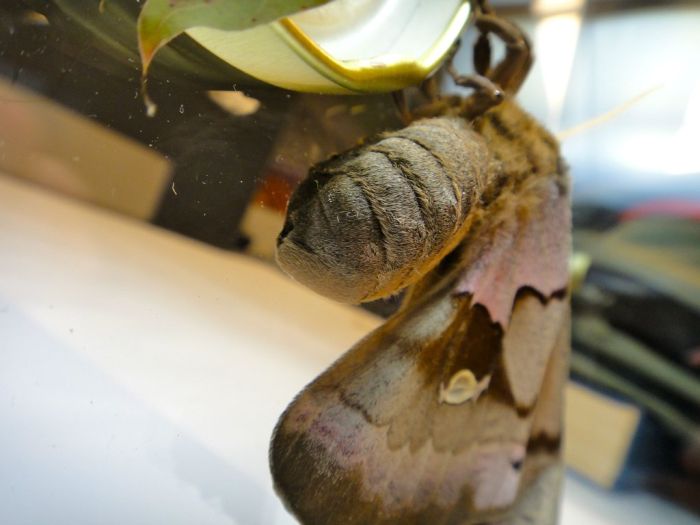|
|
Transformation Of Antheraea Polyphemus Moth
|
When the eggs hatch small yellow caterpillars emerge. As the caterpillars age, they molt 5 times (the 5th being into a pupa). Each instar is slightly different, but on their fifth and final instar they become a bright green color with silver spots on their side. They feed heavily on their host plant and can grow up to 3—4 inches long. They then spin cocoons of brown silk, usually wrapped in leaves of the host plant.
There are generally two broods throughout the United States, one that hatches in early spring and one that hatches in late summer. The moths eclose and then must pump their wings with fluid (hemolymph) to extend them. The females emit pheromones, which the male can detect through its large, plumose antennae. Males can fly for miles in order to reach a female. After the moths mate, the female spends the majority of the remainder of her life laying eggs, while the male may mate several more times. Adults of this family of moths have vestigial mouths, meaning their mouth parts have been reduced. Because of this, they do not eat and only live as adults for less than one week. In captivity, this moth is much more difficult to breed than other American Saturnids such as the cecropia, promethea or luna. Kept in a cage, the male and female tend to ignore each other, unless a food plant (particularly oak leaves) is present.
|
|









